4 Types of Ticks in Colorado (With Pictures)
-
Pete Ortiz
- Last updated:
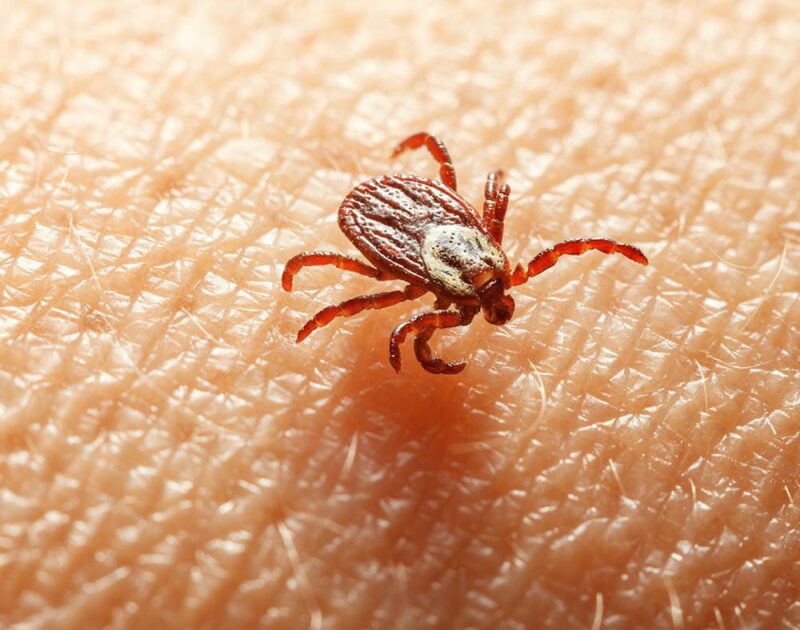
Spring and summer are the peak tick seasons in Colorado. Despite their small size, these tiny arachnids can pack a dangerous punch by spreading potentially life-threatening diseases like Colorado tick fever, tick-borne relapsing fever, and tick paralysis.
Fortunately, the types of ticks in Colorado don’t spread Lyme disease. The state is free of the black-legged tick, which is notorious for spreading the bacteria that cause Lyme disease.
Colorado has a booming deer population, and the state has experienced an increase in folk interested in outdoor activities. This, coupled with warmer temperatures and significant changes in bird migratory habits, has triggered a rise in the tick population across the state.
If you are curious about the types of ticks in Colorado, keep reading to learn more about their appearance and preferred habitat. We will also discuss the illnesses they spread and how to prevent a tick infestation.
The 4 Types of Ticks in Colorado
1. Brown Dog Tick
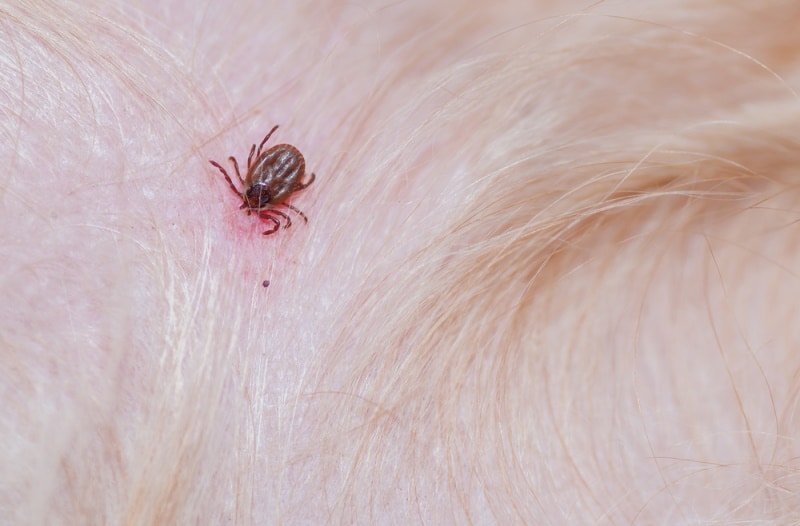
| Body Color: | Reddish-brown |
| Sputum Color: | No coloration |
| Adult Size: | 1/8 to 1/2 inch long |
| Habitat: | Indoors or outdoors |
The brown dog tick is common worldwide. As the name suggests, it prefers canine hosts and can be found on dogs in urban and rural settings. However, in the absence of its preferred host, it can feed on humans. The tick has adapted well to live with humans and can survive through its entire life cycle indoors.
Unlike most tick species that go dormant during certain times of the year, the brown dog tick is active all year round. Within habitats where the tick can thrive and find ready hosts, the brown dog tick can complete its life cycle in three months and up to four generations yearly.
- Diseases Spread: The brown dog tick is notorious for spreading Rocky Mountain Spotted Fever. It can also transmit Ehrlichiosis and Babesiosis to dogs. Fortunately, the brown dog tick does not carry Borreliae, so a tick bite will not lead to Lyme disease.
- Habitat: Brown dog ticks can complete their life cycles indoors. They are more comfortable inside homes with pets, where they are assured of food and warmth. Besides homes, kennels, and animal shelters, brown dog ticks like setting camp in grassy or bushy areas.
2. Rocky Mountain Wood Tick
| Body Color: | Reddish-brown or grayish when engorged |
| Sputum Color: | White (females) gray with white spots (males) |
| Adult Size: | 1/8 to 5/8 inch long |
| Habitat: | woodlands with low-growing vegetation |
The Rocky Mountain wood tick dominates the Rocky Mountain States, including Montana, Idaho, and Colorado. It is a close cousin of the American Dog tick, although it has an oval, flattened body shape. It takes 2 to 3 years for the Rocky Mountain wood tick to complete a life cycle.
- Diseases Spread: The Rocky Mountain wood tick can infest both pets and humans. It is an infamous vector of Colorado tick fever, tularemia, tick paralysis, and Rocky Mountain spotted fever. However, the bacteria causing Rocky Mountain spotted fever is less likely to be transmitted unless the tick remains attached to the body for over 20 hours.
- Habitat: Rocky Mountain wood ticks are typically found in woodlands with low-growing grass vegetation. They feed mainly on large mammals that travel along their habitats. Larvae and nymph Rocky Mountain wood ticks feed on small rodents and are not associated with spreading disease-causing pathogens to humans. Within residential habitats, these ticks prefer to hide on lawns.
3. American Dog Tick

| Body Color: | Brown to reddish brown |
| Sputum Color: | Off-white (females) white with gray markings (males) |
| Adult Size: | 3/16 to 5/8 inch long |
| Habitat: | Grassy areas |
The American dog tick, also known as the wood tick, is a hard tick found in Colorado. While ticks in their larva and nymph stages target smaller mammals, adult American dog ticks prefer hosting larger mammals. This is one of the most resilient tick species. Nymphs can go without feeding for six months, while adults can survive up to 2 years without feeding.
As the name suggests, these ticks are commonly found on dogs, although they can also latch on cattle, horses, and humans. Exposure to American dog ticks is likely to happen during peak seasons in spring or early summer.
- Diseases Spread: American dog ticks are vectors of pathogens that cause tularemia, and Rocky Mountain spotted fever. Rocky Mountain spotted fever is a potentially deadly disease commonly characterized by muscle aches, chills, and headaches. While tularemia is easily treatable with antibiotics, the illness can cause equally distressing symptoms, including tender lymph nodes, fever, chills, and an ulcer on the bite site.
- Habitat: The perfect habitats for American dog ticks are grass fields with low vegetation. Optimal areas have larger animals or humans passing by. Any location with dogs also makes an excellent habitat for the arachnids.
4. Lone Star Tick
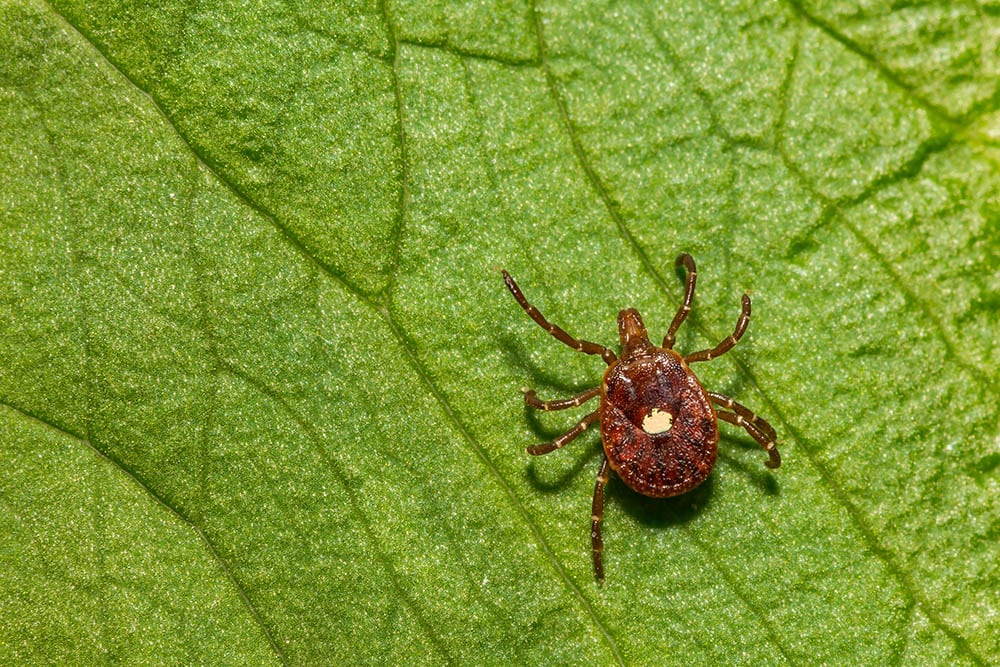
| Body Color: | Dark Brown |
| Sputum Color: | Single, white dot(female) patches of red (male) |
| Adult Size: | 1/8 to 7/16 inch long |
| Habitat: | Grasslands |
The lone star tick is quite common in the eastern United States, including Iowa and Texas. You will also occasionally find it in Colorado. It is easy to identify the female lone star tick because of the single white dot on the sputum or a “lone star” on the dark brown body. Males have white streaks on the outer edges of their bodies.
Over the recent years, lone star ticks have been expanding their range and establishing local populations outside their historic zones. Like other prevalent types of ticks in Colorado, the lone star tick does not spread Lyme disease.
- Diseases Spread: Lone Star ticks are not picky feeders. While they prefer deer hosts, they can also feed on mice, dogs, and humans. Nymph and adult females are pretty aggressive and frequently bite humans. A lone star tick bite can spread tularemia, ehrlichiosis, ‘Stari’ borreliosis and Rocky Mountain spotted fever.
- Habitat: Lone star ticks prefer living in grasslands or areas with few or no trees. You can also find them along animal trails and walkways, where they have better odds of finding a host. In locations with white-tailed deer, these ticks will set camp along the edges of streams and meadows where their preferred hosts frequent. Adult lone star ticks can go for over a year without feeding.
Tips To Prevent Ticks from Invading Your Home
There has been plenty of talk about ticks, with some speculating that this year will be challenging in preventing tick-borne diseases. If you have seen a tick hanging out in your yard, on your body, or on your pet, here are surefire measures to prevent an infestation.
- Avoid high-traffic areas of ticks in spring and early summer
- Wear protective clothing when exploring woodlands and grasslands
- Use an EPA-approved tick repellent when visiting bushy areas
- Conduct tick checks before entering your home
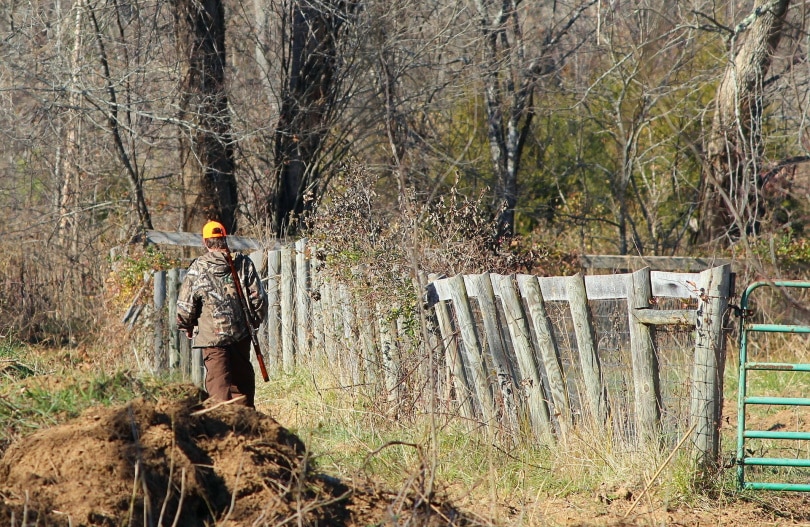
 FAQs – Ticks in Colorado
FAQs – Ticks in Colorado
Here are some frequently asked questions about ticks in Colorado.
Are Ticks Common in Colorado?
Ticks are pretty common in Colorado, although they prefer particular habitats better than others. Generally, arachnids prefer areas of higher elevations, bushy areas, woodlands, and grasslands. The tick season in Colorado begins in spring around March, and tick populations are at their peak in May. These tiny creatures remain active until the end of summer, although some species are active all year round.
How Do I Remove a Tick Attached to My Skin?
Grasp the tick with a pair of tweezers and target the spot closest to your skin. Pull it up using steady but firm pressure. Once the tick is out, put it in a zip-lock plastic bag and clean the bite site. To avoid possible infection, use warm soapy water and apply disinfectant afterward.
Which Are the Most Common Tick-Borne Illnesses in Colorado?
The most common tick-borne disease in Colorado is the Colorado Tick fever. A tick bite within the state can also cause tick-borne relapsing fever (TBRF). Rarely, tick bites in Colorado can cause Rocky Mountain spotted fever (RMSF). An infected tick needs to attach itself to your skin and feed for 6 to 20 hours for you to contract RMSF.
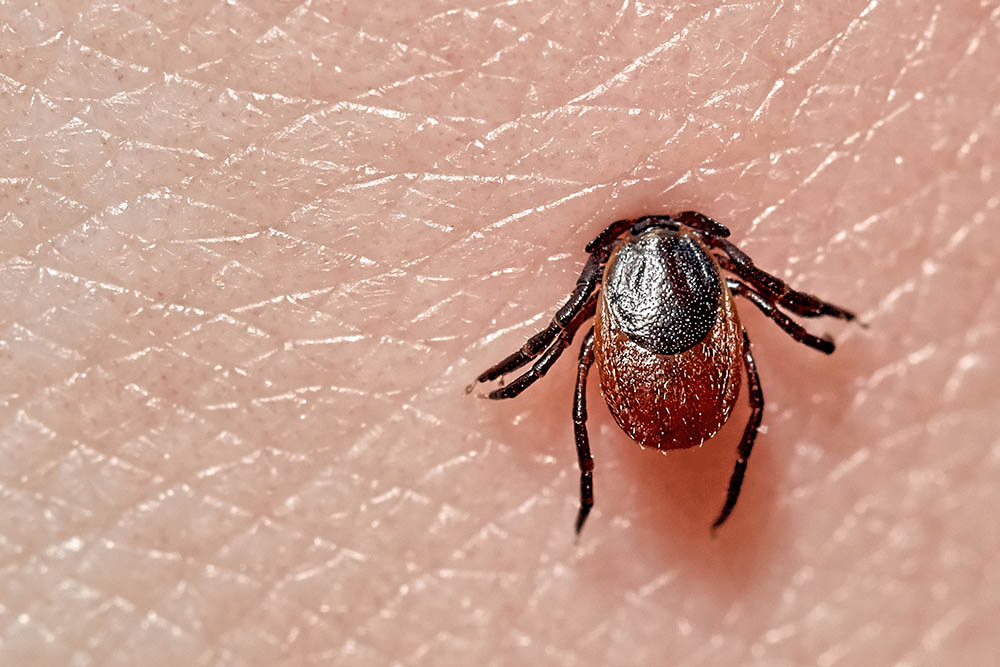
Final Thoughts: Be Safe
Ticks feed on blood, which makes them efficient disease vectors. These tiny creatures significantly threaten pets, farm animals, and human health. Over the past few years, ticks have expanded their geographical range. Unfortunately, this range expansion trend is set to continue because of Colorado’s warmer climate and mild winters.
Does this mean you have to stick indoors throughout spring and summer?
No. However, taking the necessary precautionary measures would be best, especially when visiting tick-prone areas. It is also essential to seek professional tick eradication services if you notice an infestation in your home.
Featured Image Credit: Anest, Shutterstock
Contents



